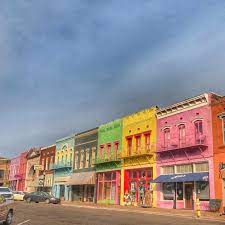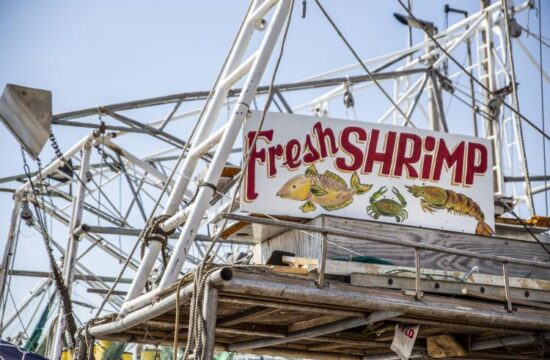He says that his parents were determined to expose him to the arts. In retrospect, he can see early signs of what would become a passion. The art lessons were spent painting and drawing magnolias, the ubiquitous Mississippi default. Or, you could go back to that school project from years ago, in which plaster, chicken wire and plaster were used together to show erosion. Crowell said, “I really, really enjoyed that.” Crowell says, “I like to figure things out for myself. I also like the outdoors.” Today, large sculptures were created outdoors at Jackson by hands, curiosity, imagination, and artistic drive. Three Swiss cheese columns are having a field day in the light and shadow. The red brackets are a tall and slim pair with straight sides that almost face each other. They seem to be in a kind of comfort, as they reach outward to possibilities. Crowell is preparing for a major retrospective with smaller pieces that have the same sensuous curves as his larger pieces. Through May, “Timeless: Robert Crowell’s Sculpture Works” will be open at the Arts Center of Mississippi as well as the Art Garden at Mississippi Museum of Art. It features approximately 50 pieces that span 20 years. Crowell’s sculptures can be found in private collections as well as public places such the Mississippi Public Service Commission and Mustard Seed. Although his art has been displayed in galleries, fundraisers, and displays throughout the years, this is his first solo exhibit. Jerrod Partridge was the exhibition curator at the first mention. Partridge states, “I believe he has such an extraordinary sense of design and is sensitive in his application — all these qualities that you look out for when looking at a piece. Partridge says that he creates pieces that will not only outlast him but also feel timeless in their application. They are timeless and won’t be out of fashion. In that sense, the pieces are timeless.” Crowell has always loved sculpture and art in general. He says, “It wasn’t necessarily encouraged.” It was there — with his uncle, an architect, who rendered watercolors, and his siblings who were artists, as well as with his dad Robert Crowell who began painting watercolors and took art lessons in his 60s, sometimes with his adult son. Crowell and Mona, his architect wife, purchased the house next to his father’s and moved in. Crowell was compelled to do more after his father died six months later. In his mid-40s, Crowell thought, “I’m not going wait until I’m 60-something to start doing what I do. “I will learn all I can about it. It’s time to get started. Because when I reach my 70s, I’ll be even better.” He turned many materials into art through museums, exhibitions and books. He learned how carve Carrara marble from Italy and how weld at Hinds Community College. Bronze bronze sculptures were made of his soccer-playing daughters. He says that when you start with art, you feel like a 5th-grader in 5th grade. “Look, Mommy! What I did!” He laughs as he recalls his Neshoba County Fair entry years ago. The display was set off using chicken wire, and the competition featured a painted tire. He shrugs. “I didn’t win a ribbon.” He shrugs. “It was probably an nude, so it was unlikely that I would do that.” Crowell started wood carving with a piece cherry with chisels given to him by his sister, a sculptor. He said, “It was abstract. I just got into the it.” Then he began to look for different types of wood. His family owned a farm where black walnuts grew. One was even felled to make art harvest. Crowell exclaims, “They brought me that tree!” His eyes are wide and his arms are extended to show the immense size of the tree and his excitement. Crowell removed the sapwood and bark by hand using chisels, gouges, and then “I carved that whole tree.” … At that time, I didn’t have a studio. I bought plywood and sawhorses, and I started carving right there in my garage. “He drove my family insane.” He also had bronze wood sculptures made. Crowell states, “Over time you become more spiritual.” I’ve heard people say that he saw the form of the stone or wood. For me. I don’t know if other artists see the same thing. Although I can see a rough piece, I don’t know how to visualize it. Outdoor work is different, but my wood pieces are completely intuitive.” Some shapes may begin as human forms and become more organic, metamorphic, or geometric as he carves. I touch the wood. It’s there. It’s there. It’s hands-on. It’s hands-on. “I’ll tell you, this is going to hurt. He says that it took a while to reach this connection. Other materials also have their own stories, which include exploration, experimentation, and execution. Crowell was also able to capture metal, concrete, marble, and terracotta as his original art. Crowell said, “If it was not easy to learn or didn’t make sense to me, I learned about it.” He says that the best way to learn was to put your hands in it and actually do it. Hard work. You can also find pieces that show your sense of humor such as a 6-foot fishing lure or a large prescription bottle for N.D. Nile. You can also see a playful mind at work. The concrete-covered, large balls have a fascinating presence in the pine-strewn backyard. However, they will still roll with a gentle push. The discs’ subtle mix of curves and corners adds visual appeal. “You can walk the Earth’s surface with your ghosts, and all other things — but you only have one chance to do it. I don’t follow anyone. Ever. “My work, whether it’s my favorite or not, it is me.”










